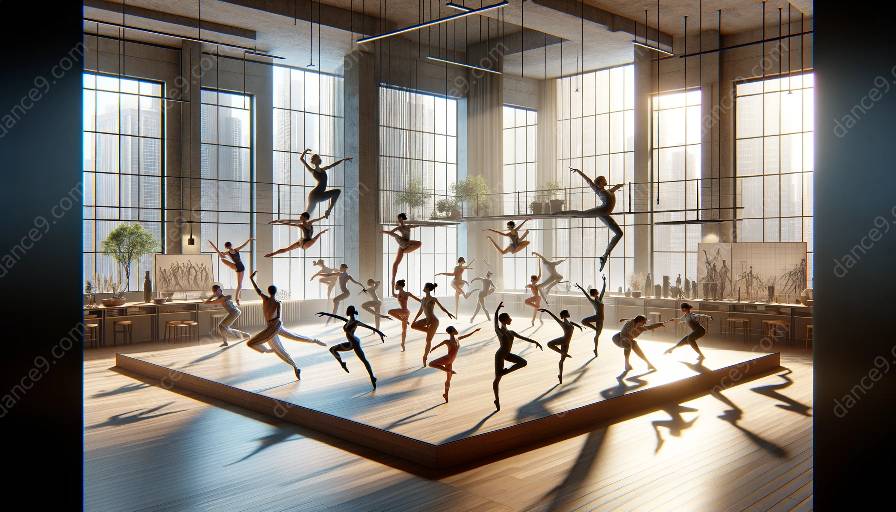Contemporary dance choreography is inherently dynamic and expressive, and the use of spatial design can enhance and amplify the impact of the overall performance. By incorporating spatial design elements, choreographers can create visually stunning and immersive experiences for both the dancers and the audience.
The Intersection of Spatial Design and Choreography
In the realm of dance, spatial design refers to the intentional organization and utilization of space, including the physical environment, the movement patterns of the dancers, and the interaction between the performers and their surroundings. This concept is crucial in contemporary dance, as it allows choreographers to manipulate space to convey emotion, shape the narrative, and create captivating compositions.
Enhancing Movement with Spatial Design
One innovative way to incorporate spatial design into contemporary dance choreography is to use the environment as a dynamic element of the performance. This could involve utilizing unconventional performance spaces such as rooftops, industrial warehouses, or outdoor landscapes to add an extra layer of depth and intrigue to the choreography. By taking dance out of traditional theater settings, choreographers can explore new possibilities for spatial storytelling and engage with audiences in unexpected ways.
Furthermore, the use of multimedia and technology can offer exciting opportunities to integrate spatial design into contemporary dance. Projection mapping, interactive digital elements, and immersive audio-visual setups can transform the performance space into a multi-sensory experience, blurring the boundaries between the physical and digital realms. This approach can create a sense of heightened reality and expand the expressive possibilities for choreographers and dancers to push the boundaries of their artistic vision.
Creating Interactive Environments
Another innovative approach to incorporating spatial design into contemporary dance choreography is to create interactive environments that respond to the movements of the dancers. This could involve the use of responsive lighting, interactive installations, or architectural elements that adapt to the dancers' motions, creating a symbiotic relationship between the performers and their surroundings. By merging technology and spatial design, choreographers can craft immersive environments that resonate with the theme and emotional content of the dance, enhancing the overall impact on the audience.
Embracing Site-Specific Choreography
Site-specific choreography is a compelling way to explore the relationship between spatial design and dance. This approach involves creating works that are intricately linked to particular locations, taking inspiration from the unique architectural features, historical significance, and natural landscapes of the chosen site. By crafting choreography that responds to the spatial qualities of a specific environment, dancers and choreographers can build narratives that are deeply rooted in the essence of the place, fostering a profound connection between the performance and its surroundings.
Fostering Collaboration Between Dance and Design Professionals
Collaborative partnerships between dance practitioners and spatial designers can yield innovative outcomes in contemporary choreography. By harnessing the expertise of architects, set designers, and spatial planners, choreographers can infuse their works with inventive spatial concepts, pushing the boundaries of traditional dance presentation. This collaborative approach can result in groundbreaking productions that merge the principles of spatial design and choreography, expanding the artistic possibilities for both disciplines.
Conclusion
In summary, the integration of spatial design into contemporary dance choreography opens up a vast landscape of creative possibilities. Whether through the manipulation of physical space, the integration of technology, the creation of interactive environments, or the exploration of site-specific choreography, spatial design offers innovative pathways for choreographers to craft compelling narratives and captivating performances. By embracing the intersection of spatial design and choreography, dance practitioners can unlock new dimensions of artistic expression, captivating audiences and immersing them in unforgettable experiences that transcend traditional performance boundaries.






































